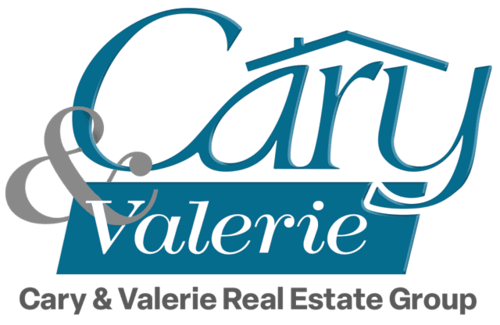Soaring U. S. house prices dominate recent headlines and for good reason. It is true that house prices are the highest they have ever been – over 22 percent higher than the housing boom peak in 2006. The acceleration in the pace of annual house price growth began in the summer months of 2020, as potential home buyers emerged from lockdowns armed with record low mortgage rates and were met by historically low housing supply – a perfect storm for rapid house price appreciation.
House prices increased over 13 percent on a year-over-year basis, but house-buying power has grown even faster at 19 percent year-over year
By conventional measures of affordability, especially in an environment of modestly rising (in some markets declining) household income, a surge in house prices includes significantly reduced affordability. Yet, house price fluctuations alone, or even the relationship between house price growth and income growth, can be a misleading indicator of affordability. It overlooks what matters more to potential buyers – house-buying power. This is how much home one can buy based on changes in income and interest rates.
For example, let’s assume you earn $100,000 a year, have a 33 percent debt-to-income ratio, and have 5% as a down payment for a home. With a 4 percent mortgage rate, your house-buying power is $606,000. But, if rates fell to 3 percent, your house-buying power increases by $80,000. Our Real House Price Index (RHPI) adjusts house prices for purchasing power by considering how income levels and interest rates influence the amount one can borrow. The ability of low or declining interest rates to boost house-buying power makes it possible for a housing market to have high or even rising house prices, and yet remain highly affordable (as measured by the RHPI). If we look at past real estate markets, we see that house prices alone are not always a good measure of affordability.
The 90s Recovery: Low House Prices, Low affordability
Nationwide house prices, real house prices, and house-buying power can be indexed to January 1990. From October 1993 through December 1994, a period when the U.S. economy was recovering from the early 1990s recession, housing was considered relatively unaffordable. This was even though house prices were barely rising (1.0 percent). Despite relatively flat house prices, the RHPI increased over 20% during this time period because house-buying power fell by 16 percent due to rising mortgage rates. Even though house price growth was low, that was not enough to call the market “affordable” since it was accompanied by declining house-buying power and declining affordability.
The Housing Boom Era: High House Prices, Low Affordability
U.S. house prices surged in 2004 and peaked in 2006. From January 2005 through March 2006, house prices jumped nearly 13 percent, while mortgage rates remained relatively steady. During this time, the RHPI also increased dramatically by nearly 15 percent, indicating significantly reduced affordability. The reason? House price appreciation far outpaced house-buying power. During the housing boom era, rising house prices did signal falling affordability, but only because house-buying power did not keep up.
The Pandemic Era: High House Prices, High Affordability
In the most recent RHPI report reflecting January 2021 data, house prices increased 13 percent on a year-over-year basis, but house-buying power has grown even faster, increasing by 19 percent year over year. The result? Despite rapidly rising house prices, affordability actually improved, with the RHPI falling nearly 5 percent during the same time period. In fact, while house prices are now more than 22 percent above the housing boom peak in 2006, real, house-buying power-adjusted, prices are 48 percent below their 2006 housing boom peak. The lesson? Affordability is dependent on house-buying power.
Will Rising Mortgage Rates Signal the End of an Affordable Era?
Recently, mortgage rates have increased modestly. Does this spell the end of an affordable era? Not quite. As rates rise, affordability may become an issue for some buyers on the margin. As these buyers pull back from the market and sellers adjust their expectations, house price appreciation will adjust. But, the improving economic conditions and the ongoing shortage of supply relative to demand continue to support house price growth. The underlying fundamental housing market conditions support a moderation of house price appreciation which, alongside a healthier labor market and still historically low mortgage rates, should keep housing in the affordable range.
Considering 2021 as the year to cash in on your equity and receive up to $500,000 tax free?
Take advantage of our “Free” loan to update your home when you list with Cary Hairabedian
Cary Concierge Service
Cary will Fully Front the Cost to Prepare Your Home to Sell at the Highest Price.
This includes Staging, Repairs, and Cosmetic Improvements.
No Hidden Loan Fees – No Interest Charged – Ever.
Quick: Our concierge process is designed for speed. Work can begin now – and your home will sell fast.
Affordable: Eliminates stress. No loan fees, No appraisal fee, and No interest – No kidding.
Intelligent: Cary will help you determine the best updates and repairs that will give you the highest return.
Easy: Cary is personally involved throughout the process, providing the best advice from start to finish.

We currently have buyers right now looking to purchase a Cypress home from $700,000 to $1.4 million.
Call Cary direct at 800-944-2441 or email Cary at: Cary@SoCal.rr.com. We can review your best options to ensure you receive the most profit when selling.
The call, like our Concierge loan service, costs you nothing. And of course, our conversations are always confidential. Let’s talk soon.
